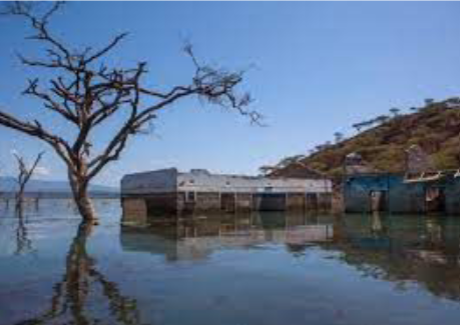Temperatures have risen by 2°C in East Africa, scientists warn of more extreme impacts

Kenya has been listed among countries that are heavily impacted by climate change. On Friday, the World Meteorological Organisation said the temperatures in Kenya had risen by 1.9°C, an increase greater than
pre-industrial times.
The organization has shared 10 impacts of climate change in East Africa, showing serious concerns for environmentalists and the regional governments.
Since 1860, Addis Ababa (Ethiopia) has warmed by 2.2°C, Khartoum (Sudan) by 2.09°C, Dar es Salaam (Tanzania) by 1.9°C and Mogadishu (Somalia) by 1.9°C.
The ice cover on Mount Kilimanjaro decreased by 85 per cent between 1912 and 2007. The snow could disappear in less than 20 years and ice as soon as 2022.
The World Meteorological Organisation said Africa only contributes 3.6 per cent of total global emissions, but despite bearing almost none of the historic responsibility, many African countries are among the most vulnerable in the world.
The facts come even as countries gear up for the upcoming global climate change talks to be hosted in the UK in November.
The organisation said since the 1950s, heatwaves have become longer, more frequent, and hotter. And because heatwaves are not routinely monitored in sub-Saharan Africa, heat-related deaths are also constantly underreported.
“Under current climate projections, the fast-growing population of East Africa will face increased health risks due to extreme heat.”
Warm temperatures have increased the rates of Malaria, Rift Valley Fever, Dengue, and Chikungunya in East Africa, the scientists said.
The warming of East African highlands is allowing malaria-carrying mosquitoes to survive at higher altitudes.
“The science is clear that climate change will make droughts, flooding and rising lakes more common in Kenya and East Africa. That’s why at the global climate change talks, COP26, in the UK we are working to achieve a fair inclusive climate deal. This is the time for action,” British High Commissioner to Kenya Jane Marriot said.
Areas like Central Kenya could be plunged into the malaria zone and rates will go up in other parts of the country, turning the climate emergency into a health crisis, WMO said.
The Indian Ocean is reportedly the fastest-warming ocean. Oceans absorb 90 per cent of the heat caused by human activity.
This is increasing the numbers and the intensity of tropical cyclones in East and Southern Africa. The strongest tropical cyclones on record to affect Mozambique and Somalia occurred in 2018 and 2019 and affected over two million
people.
In 2018, the rainfall from cyclones Mekunu and Luban created desert lakes and vegetation, an ideal environment for the hatching of desert locusts. The cyclone winds helped the locusts reach East Africa leading to the
worst outbreak in many decades.
In 2019, when East Africa experienced record rainfall and floods in many parts of the region, tomato prices skyrocketed in Kenya, Uganda and Tanzania.
In Kenya, a kilo of tomatoes went from Sh80 in 2017, to Sh280 in 2019. Climate change is expected to bring more frequent extremes and more intense rainfall. Predictions and forecasting remain key to reducing the extremely
high vulnerability of East African farmers to climate change.
Climate models suggest the region will be getting wetter in the years to come, increasing the risk of floods and displacement associated with more intense rainfall.
The frequency of extremely wet short rains (between October and December) is expected to increase, as well as wind speed and rain associated with tropical cyclones. To tackle this, communities need to build strength to climate shocks, as unprecedented climate extremes increase.
In 2016, Kenya ratified the Paris Agreement and submitted an ambitious Nationally Determined Contributions (NDC) with a commitment to reduce emissions by 30 per cent by 2030.
The updated NDC increases mitigation commitment from 30 per cent in 2016 to 32 per cent by 2030. The NDC also commits to enhance resilience in all sectors of the economy.
The implementation cost of the updated NDC mitigation and adaptation is estimated to cost Sh6.71 trillion between 2020 and 2030. Scientists said 2020 was one of the wettest years on record.
The short rains of 2019 were also wetter than usual. The water levels of many lakes rose drastically. Lakes in Rift Valley rose to their highest level on record. There was also a rise in water levels in Lake Victoria.
The rising lakes displaced thousands of people and destroyed livelihoods. The River Nile reached in August 2020 the level of 17.43 meters, the highest ever since records began more than a century ago.
For the Nile region, models predict that the flow of water in the river will increase by 15 per cent, and the fluctuation in the annual amount of water the river carries will increase by 50 per cent.
Scientists have warned that record-breaking rises in the lake levels are expected to continue into the future under current climate projections.
They said climate change is making extreme climate events more frequent and more extreme. Between 1997 and 2000, floods and droughts associated with El Niño — La Niña reduced Kenya’s gross domestic product (GDP) by 14 per
cent.